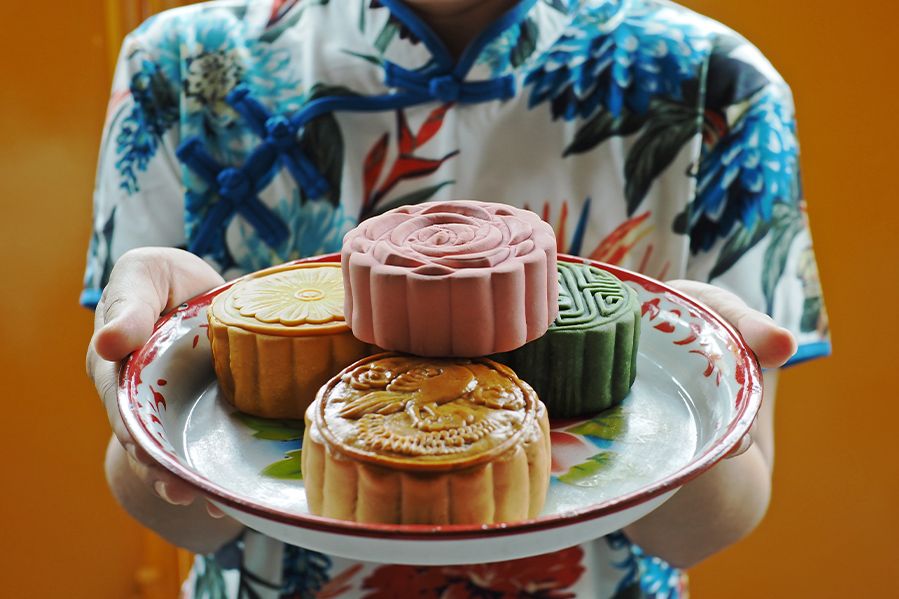
The Moon Festival, also known as the Mid-Autumn Festival, is celebrated in many countries throughout Asia. It takes place around the autumn equinox on the 15th day of the eighth lunar month following the Chinese New Year. Each region has its own particular traditions, but there are some features most of the cultures that celebrate this festival tend to share.
History of the Moon Festival
There are many versions of the origin story for the moon goddess Chang'e and the start of the festival that honors her. One legend claims that she drank elixirs of immortality and went to live in the moon, where she resides today. Offerings of her favorite foods, such as mooncakes, are set out to worship her during the festival.
The timing of the festival coincides with the full harvest moon, which is a symbol of unity and harmony. Consequently, families gather to appreciate the moon together and enjoy the community they have been given. They share food and may burn incense or observe other regional customs to honor the moon goddess.
Purpose of the Celebration
The Mid-Autumn Festival centers around honoring the moon, harvest time and the bounty of resources and relationships that those who observe it enjoy. While people in different Asian cultures have their own traditions, there are a few main elements that make up most Moon Festival celebrations:
- Gathering with friends and family
- Worshipping the moon or moon goddess for abundant harvests and communal harmony
- Giving gifts and sharing food
- Petitioning for a happy future, particularly as it pertains to having children or a long life surrounded by beloved family
There are often public celebrations too. For example, the annual Fire Dragon Dance in Hong Kong commemorates Tai Hang's deliverance from the natural disasters that plagued the village in its early days. Many public festivities also involve lighting lanterns and offering them as a tribute to the moon. Single people often attend gatherings to reap the benefits of this lucky day in hopes of finding love.
Mid-Autumn Festival Food
Mooncakes are the most common food items that are shared during the festival. They are aptly named because when finished, they resemble the moon at its fullest. There are many different kinds of mooncakes, and they can be either sweet or savory. Most variations include a pastry cooked in a mooncake mold and stuffed with a filling such as a lotus paste, custard or meat.
Other foods enjoyed during the Moon Festival center around the seasonal harvest. Revelers partake of stone fruits such as apples and pears as well as treats that incorporate pumpkin or taro. Seafood that is in season during this time in each region, such as the hairy crab in Shanghai, is also a popular menu item.
Festival Gifts
The majority of gifts received during the festival are food-based. Of course, the most popular presents are mooncakes. They are often accompanied by the recipient's favorite teas to enjoy with the pastry. Fruit baskets symbolize the generous bounty found during the season and offer a healthy alternative to snack on. Finally, those who want to celebrate their prosperity often do so by sharing and gifting the sweet, floral osmanthus wine.
The Moon Festival is one of the most popular celebrations in Asian cultures, second only to Chinese New Year. Every culture has its own traditions and rituals for worshipping, honoring or simply appreciating the moon and the abundance it brings forth. No matter what the specific details of the celebration are, they are centered around reuniting with family and friends and being thankful for the richness of the relationships shared with one another.
2 comments
-
Moon was absolutely beautiful last night was mars and Orion... Wonderful reason to celebrate. Christians just don't know what they are missing. Himalayan pink salt in the hot tub, bottle of wine and a naked spouse lit by the moon.


I celebrate the full moon with a Himalayan pink salt footbath and a glass of wine.